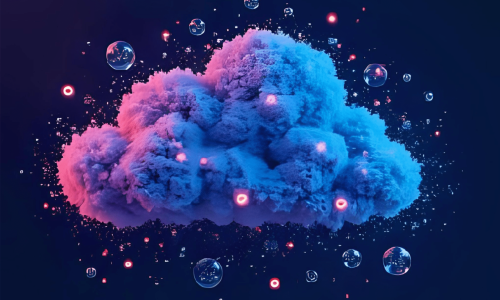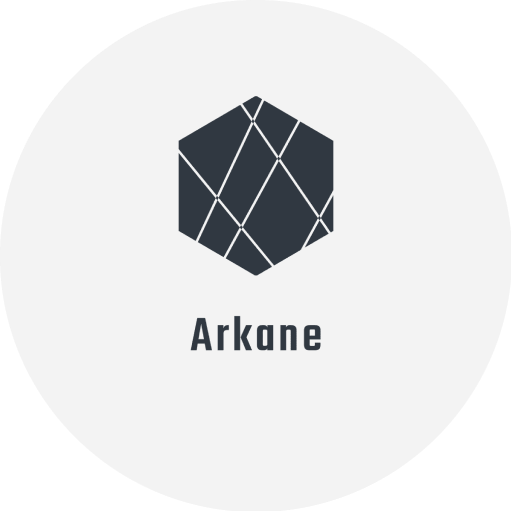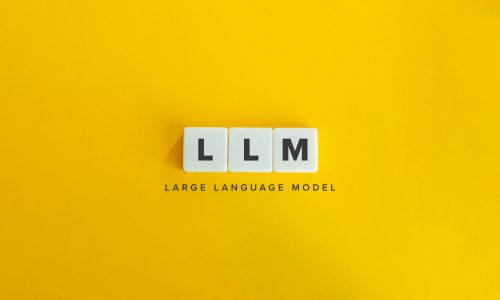
Key Components of Stable Diffusion: Noise and Steps

How Far We’ve Come in AI Image Generation
The evolution of AI in image generation, epitomized by Stable Diffusion, marks a significant turning point in the realm of digital creativity and computation. Not long ago, the concept of generating intricate images from mere textual descriptions seemed like a distant sci-fi fantasy. However, rapid advancements in deep learning and diffusion models have brought this vision to life, transforming the landscape of artificial intelligence and art.
A brief historical glance reveals the pace of this transformation. In 2014, Google’s groundbreaking research on generative adversarial networks (GANs) catalyzed AI synthesis, opening new frontiers in digital art and image generation. NVIDIA’s 2018 publication on Progressive Growing of GANs further enhanced image realism, especially in facial generation. The year 2020 saw OpenAI’s unveiling of the DALL-E model, capable of creating images from text captions, illustrating the merging of linguistic and visual AI capabilities. In 2021, DeepMind’s Perceiver IO model extended this integration to handling images, text, and audio in unison, demonstrating the increasing versatility of AI models.
The advent of Stability AI’s Stable Diffusion 1.0 in 2022 was a landmark moment, democratizing text-to-image generation with accessible and versatile tools. This innovation was further advanced with Stable Diffusion 2.0, which introduced significant architectural upgrades, enhancing the model’s capabilities and efficiency.
These upgrades include the integration of the OpenCLIP Model, a state-of-the-art contrastive language-image pretraining framework, and the shift to more advanced Latent Diffusion Models, resulting in greater coherence and precision in generated images. These developments not only refined the quality of output but also expedited the image generation process, making Stable Diffusion a state-of-the-art tool for text-to-image generation.
Stable Diffusion 2 has also significantly improved user control and precision in AI-generated images. Key features include higher resolution images, with the ability to render at up to 768×768 pixels, allowing for more intricate details. The model can handle longer and more complex prompts, enabling the creation of more nuanced and detailed images. Furthermore, the introduction of negative prompts allows users to specify elements they wish to exclude, offering greater control over the final output. The model’s training on the expansive LAION-5B dataset, consisting of billions of image-text pairs, has substantially improved the coherence and accuracy of generated images.
These advancements have expanded the possibilities for AI in various domains such as digital painting, illustration, concept art, graphic design, photo upscaling, and even AI-assisted animation. Each domain benefits from the model’s enhanced resolution, detailed prompt interpretation, and improved data training.
Looking ahead, there’s anticipation for further advancements in AI image generation. Researchers are exploring areas like video generation, 3D scene creation, multimodal models that process diverse data types, personalization, and improving data efficiency. This ongoing research promises to push the boundaries of what’s possible in AI-generated imagery, setting new standards in digital creativity.
Understanding the Core Components: Noise Scheduling and Diffusion Steps
In the world of Stable Diffusion, noise scheduling and diffusion steps are the cornerstones of image generation, laying the foundation for the remarkable capabilities of this AI technology. Noise scheduling, at its core, is a meticulously designed process that controls the level of noise introduced into an image at each step of the diffusion model. This technique is vital for generating high-quality, coherent images from textual prompts. The essence of noise scheduling lies in the strategic addition and subsequent removal of noise, dictating the clarity and quality of the final output.
The innovation in noise scheduling strategies has been pivotal in enhancing the performance of diffusion models. Traditional methods involved a one-dimensional function to parameterize the noise schedule, often based on parts of cosine or sigmoid functions with temperature scaling. These functions played a crucial role in determining the noise level at each step of the diffusion process. A recent advancement is the introduction of a simple linear noise schedule function, which offers a new dimension to noise control in image generation.
Adjusting the input scaling factor represents another significant strategy in noise scheduling. This method indirectly influences the noise schedule by altering the scale of the input data. This adjustment proves to be particularly effective across different image resolutions, enabling the diffusion model to adapt to varying levels of complexity and detail in the image generation process.
The combination of these two strategies into a simple compound noise scheduling strategy has led to groundbreaking improvements in the field. This integrated approach facilitates state-of-the-art, single-stage generation of high-resolution images based on pixels. By merging these techniques with the recently proposed RIN architecture, the model can produce images of unparalleled resolution and fidelity. This compound strategy demonstrates the profound impact of noise scheduling on the overall efficacy of diffusion models.
In conclusion, noise scheduling and diffusion steps are not just technical components of the Stable Diffusion process; they are the artistic brush strokes that define the vibrancy and realism of the AI-generated images. The continual refinement and innovation in these areas underscore their importance not only in image generation but also in other complex tasks like panoptic segmentation. Selecting an appropriate noise scheduling scheme is crucial for practitioners aiming to train diffusion models for new tasks or datasets, highlighting the intricate balance between art and science in this field.
Noise Scheduling: The Backbone of Image Clarity
In the dynamic field of AI image generation, particularly in the context of Stable Diffusion, noise scheduling emerges as a fundamental component. It is an intricate process that critically influences the clarity and quality of the images generated. The novelty in this area lies in the realization that common diffusion noise schedules often overlook a key aspect: the final timestep must reach zero signal-to-noise ratio (SNR). This oversight can lead to limitations in the model’s capability, such as generating images with restricted brightness ranges. The solution to this involves a few strategic changes: rescaling the noise schedule to achieve zero terminal SNR, modifying the training model with v prediction, adjusting the sampler to always initiate from the last timestep, and recalibrating the classifier-free guidance to prevent over-exposure. These adjustments are crucial as they ensure congruence in the diffusion process between training and inference, enabling the generation of images that more faithfully represent the original data distribution.
The recent advancement in noise scheduling strategies for diffusion models has been significant. Traditional approaches typically employed a one-dimensional function for noise scheduling, such as cosine or sigmoid functions with temperature scaling. However, recent innovations have introduced simpler linear noise scheduling functions, offering a new perspective in controlling noise levels during the diffusion process. Additionally, another strategy involves adjusting the input scaling factor, which indirectly affects noise scheduling and has proven effective across varying image resolutions. When these strategies are combined with recent architectural developments like the RIN architecture, they enable single-stage generation of high-resolution images, showcasing the impact of noise scheduling on image generation quality.
Diffusion Steps: The Path to Image Perfection
The realm of AI image generation, particularly in Stable Diffusion models, has been revolutionized by advancements in the diffusion step process. Traditionally, diffusion models synthesized high-quality images through a series of fine-grained denoising steps, breaking down the image generation process into manageable stages. However, this approach, while effective, proved to be computationally intensive, necessitating numerous neural function evaluations (NFEs).
In response to this challenge, an innovative method known as Nested Diffusion has been introduced. This method reconceptualizes the image generation scheme as two nested diffusion processes. Nested Diffusion offers a significant advancement over traditional models by enabling the generation of viable images even when stopped prematurely, before the completion of all diffusion steps. This flexibility allows users to stop the generation process at any point based on their satisfaction with the intermediate results. In practice, Nested Diffusion has demonstrated the ability to surpass the intermediate generation quality of the original diffusion model while maintaining comparable final slow generation results.
Nested Diffusion represents a departure from the conventional diffusion process by providing a more detailed anytime algorithm. This approach allows for the return of valid images even if the algorithm is terminated early. The computation devoted to each step in Nested Diffusion is adaptable, meaning the amount of computation for each step can vary. This feature suggests the potential for further optimization of the diffusion process, where the allocation of inner steps for each outer step could be fine-tuned for even better results.
In conclusion, the evolution of diffusion steps in Stable Diffusion models, exemplified by the development of Nested Diffusion, marks a significant leap forward in AI image generation. This advancement not only enhances the quality and flexibility of the image generation process but also addresses the computational challenges inherent in traditional diffusion models.
Advanced Techniques: Enhancing Image Quality and Diversity
In the constantly evolving field of AI-generated imagery, particularly in the Stable Diffusion framework, the enhancement of image quality and diversity through advanced techniques like Karras noise schedule and Ancestral samplers is a subject of considerable interest. The Karras noise schedule, named after its proposer, represents a refined approach to controlling the noise levels in image generation. This schedule is characterized by its progressively smaller noise step sizes as it nears the end of the process. This nuanced control over noise levels at each step has been found to significantly improve the quality of the generated images, allowing for a finer and more detailed rendering of visual content.
Ancestral samplers, on the other hand, introduce a stochastic element to the image generation process. By adding noise at each sampling step, these samplers create a degree of randomness in the outcome, which contributes to the diversity of the generated images. This randomness ensures that the images produced are not just high in quality but also varied and unique in their composition and appearance. The inclusion of Ancestral samplers like Euler a, DPM2 a, and DPM++ 2S a Karras in the Stable Diffusion framework reflects a deliberate move towards embracing and harnessing the creative potential of controlled stochasticity in AI image generation.
A noteworthy development in this context is the Sinusoidal Multipass Euler Ancestral (SMEA) sampler. SMEA, based on the Euler ancestral sampler, introduces a sine-based schedule that alternates between multiple passes of the regular diffusion model during the sampling process. This innovative approach ensures that Stable Diffusion pays attention to both local and global features within an image. This is particularly beneficial when generating higher-resolution images, where conventional samplers may struggle with repeating subjects or unusual anatomical details due to inadequate global attention. SMEA aims to address these issues, thereby improving overall coherency and quality, especially at higher resolutions.
Furthermore, the SMEA DYN variant of this sampler has been specifically optimized for higher resolution images. It focuses less on lower generations and more dynamically on mid to high-range generations, resulting in more refined compositions. The effectiveness of SMEA and SMEA DYN samplers is most pronounced in higher resolution image generation, showcasing their capability to enhance the overall quality and diversity of images produced by the Stable Diffusion model.
In conclusion, the integration of advanced techniques like the Karras noise schedule and Ancestral samplers, along with innovative developments like SMEA and SMEA DYN, represents a significant stride in the pursuit of higher quality and diverse AI-generated images. These advancements not only elevate the technical capabilities of Stable Diffusion but also enrich the aesthetic and creative possibilities within the domain of AI image generation.
Comparative Analysis of Samplers: A Performance Overview
In the domain of Stable Diffusion, a critical aspect of AI image generation is the comparative performance of various samplers. This analysis is key to understanding how different samplers impact the quality, speed, and convergence of generated images.
- Euler, DDIM, PLMS, LMS Karras, and Heun Samplers: These represent the original diffusion solvers. DDIM, similar to Euler, introduces more variations due to the injection of random noise during sampling. PLMS showed inferior performance in this comparison. LMS Karras had difficulty converging, while Heun, though faster in convergence, is slower overall as it’s a second-order method.
- Ancestral Samplers: Known for adding noise at each step, they are not recommended if stable, reproducible images are desired, as they do not converge. Their stochastic nature impacts the predictability of the final output.
- DPM and DPM2 Samplers: DPM2, including its Karras variant, performed better than Euler but at a slower speed. DPM adaptive, using its own adaptive sampling steps, performed well in terms of convergence but was noted for its slow speed.
- DPM++ Solvers: The standard DPM++ SDE and its Karras variant showed similar shortcomings to ancestral samplers, including significant image fluctuations. Conversely, DPM++ 2M and its Karras variant demonstrated good performance, especially at higher step counts.
- UniPC Sampler: This sampler converges slightly slower than Euler but is generally effective. It represents a balance between accuracy and speed, offering a viable option for a range of applications.
- Speed Comparison: Samplers fall into two groups based on rendering times. The first group, including solvers like Euler, operates at a standard speed (1x), while second-order solvers like Heun are approximately two times slower due to double evaluations in each step.
- Perceptual Quality: DDIM excels in generating high-quality images rapidly, often outperforming others in fewer steps. Ancestral samplers, despite their randomness, can still produce quality images comparable to Euler. DPM2 samplers slightly outperform Euler in image quality, while DPM++ SDE and its Karras variant lead in this category. UniPC shows comparable results to Euler, especially at higher steps.
In summary, the choice of sampler in Stable Diffusion significantly influences the outcome in terms of image quality, convergence, and speed. This analysis underlines the need for careful selection based on the specific requirements of the task at hand.
Newsletter
You Do Not Want to Miss Out!
Step into the Future of Model Deployment. Join Us and Stay Ahead of the Curve!





